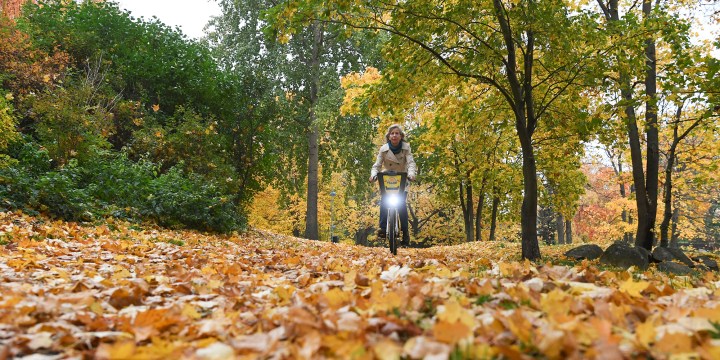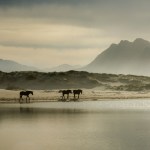ENVIRONMENTAL ECONOMY
Bio boom time: How Finland leads the world on Sustainable Development Goals

Finland is the global leader in sustainability this year. How did it achieve these UN Sustainable Development Goals, and how is it collaborating with South Africa?
Finland is this year’s global leader in sustainability, according to the 2021 Sustainable Development Report, which assesses the United Nations member states’ progress toward achieving the Sustainable Development Goals (SDGs) and is used as a tool to assess country performance on the UN Agenda 2030.
The report’s lead author is Professor Jeffrey Sachs, an eminent environmental economist and one of the most outspoken and respected voices on the global sustainability stage, being president of the UN Sustainable Development Solutions Network and director of the Center for Sustainable Development at Columbia University.
While Finland has consistently ranked highly in the past six reports, this year was the first time it topped the SDG Index, beating more than 160 UN member nations.
Camilo Ramada, senior adviser for southern Africa at Business Finland, told Our Burning Planet: “Internally, Finland has gone through a big process of reconceptualising itself from the point of view of sustainability.
“And out of that has come a lot of technology suggestions, strategies that Finland wants to share with the world and Finland has now proposed itself to be one of the leading nations in this transition to the circular economy.”
Marko Saarinen, development counsellor at the Embassy of Finland in South Africa, said about Finland topping the SDG report: “I mean, it’s great to be recognised for the good work that has been done in Finland and by Finland.
“But there’s still a lot to be done as well. We have very ambitious targets and there’s a lot of work to be done to achieve the government target of being a carbon-neutral country by 2035… and carbon negative soon after that.”
The Sustainable Development Goals
The SDG Index assesses each countrys’ overall performance against 17 SDGs.
As illustrated in the diagram above, the four SDGs Finland achieved this year are: no poverty, quality education, clean water and sanitation, and affordable and clean energy.
So, how did it become a world leader in sustainability and how did it reach these goals?
Affordable and clean energy
One of the biggest drivers of global heating is the release of greenhouse gases into the atmosphere, such as carbon dioxide, through the burning of fossil fuels. This is why it is important to make a transition to renewable energy.
Saarinen says that in Finland, “we have the second-highest proportion of renewable energy within the EU. Around 43% of our total energy use comes from renewable sources. In electricity and heating, the proportion of renewable energy use is even higher, over 50%.
“In addition, we also have nuclear power that makes our use of fossil fuels for energy production quite low. And the share keeps decreasing quite a lot. There’s also a ban on the use of hard coal for energy production from 2029. This means that there is already a big reduction in coal consumption taking place.”
Saarinen explains that Finland’s use of fossil fuels is down 26% from what it was in 1990 and 38% less than during its peak year in 2003.
“Of course, there’s still a lot of work to be done for us to reach the target of becoming carbon neutral by 2035. So, that’s a very ambitious challenge.” The EU target is to be carbon neutral by 2050, but Saarinen says Finland is trying to move faster than that.
Clean water and sanitation
Saarinen explains that a lot of investment and work goes into the water-treatment systems in Finland and the preservation of its many freshwater resources, including the prevention of agricultural waste leaking into its 188,000 lakes.
Saarinen adds that Finland tries to use its water resources very efficiently and has quite advanced aquifer management resources.
“Managed aquifer recharging is used as a method for sustainable groundwater resources management. This helps in addressing current and future challenges to secure clean and adequate drinking water. In Finland, rainwater and surface water are absorbed through a managed process to fill the aquifers for water supply use.”

Quality education
Saarinen explains that Finland puts a big emphasis on equality.
“That has been really important in Finnish development… from agrarian and poor society 100 years ago, to where we are today. And there’s been a lot of emphasis on everybody getting access to quality education.”
Finland is widely considered to have the best education systems globally, and that isn’t just because all public education (including public universities) is free to citizens, but perhaps because of the focus it puts on its educators.
“One of the keys that have been often cited for the Finnish education system success is the strong focus on teachers,” says Saarinen. “Every teacher has a higher university degree, which makes them very professional. Also, they are allowed to choose their teaching methods and books according to what they think works best for their pupils. Teaching is a highly respected profession, and teachers are appreciated members of society with reasonable salaries.”
Saarinen adds that climate and circular economy issues are being increasingly incorporated into the national curriculum.
Having quality education affects a country’s sustainable future since the custodians of tomorrow will be informed and well equipped on the issues of the climate crisis.
Responsible consumption and production
Responsible consumption and production is an SDG that Finland, along with the rest of the countries assessed, didn’t achieve this year.
“Overconsumption is quite a common issue for high-income countries,” says Saarinen. “One of the ways of trying to address this is to focus on the circular economy. That includes designing out waste as far as possible, and by reuse and recycling. Also, moving from the ownership of goods to a services and sharing economy is often an option.”
Marika Ollaranta, circular economy specialist and head of the Bio and Circular Finland Programme at Business Finland, agrees that Finland could consume less and collect more plastic and biomass materials to recycle more.
However, the country has been a pioneer in circular solutions and has been leading the drive for sustainable materials globally for some time.
Global pioneers of the ‘circular economy’
In 2016, Finland was the first country in the world to publish a national roadmap to a circular economy.
A circular economy is a closed-loop economic system or model of production and consumption, created as an alternative to the linear take-make-waste model, that aims to maximise the circulation of materials, products and components and minimise waste.
“Finland was the first country in the world to develop a national roadmap to transition to a circular economy,” says Saarinen.
Business Finland has incorporated the principles of a circular economy into its business models, promoting bio-packaging and sustainable production and consumption.
For example, Ollaranta has been part of expanding Finish biobased packaging to European Union countries — whereby brand owners of food packaging use renewable and recyclable materials.
Ollaranta explains that the CO2 level is very high when you produce plastics for the first time. So it’s important to use that material for as long as possible, or introduce “bio-packaging”, which are materials that don’t emit as much CO2 during production.
Ollaranta says the importance of CO2 levels has risen so much. “It plays a significant role when companies are evaluating what kind of innovation they use for their solutions.”
However, Ollaranta emphasises the importance of reusing even biobased packaging, which is a principle of the circular economy. For example, wood fibre can be used five to seven times and the CO2 level is extremely low because there is no plastic or oil.
“What is extremely relevant is that whatever we produce, we must recycle and reuse it again,” says Ollaranta. “Because if you will, for example, bring biobased packaging into South Africa, it will also be really crucial that the reused packages are then collected and recycled and reused again because as I mentioned, they can be reused seven times.”
Ollaranta adds: “It is crucial that society and companies are aware that these kinds of sustainable options are already available. They just need to want them and require them and sort of push the chains. And I think that everybody is sort of like a wheel and the chain in their behaviour is needed.”
Good waste-management strategies
Finland is also a global leader in waste management strategies, with less than 1% of the municipal solid waste generated being landfilled in 2019.
“There’s been some recent legislation and waste management strategies that have changed quite significantly the level of recycling,” says Saarinen.
“For companies and households, it is relatively expensive to take their waste to landfills. Also, biowaste is forbidden from landfills. So, it pays off to recycle.”
Saarinen says that Finland is also trying to recover methane from landfills by making energy use of landfill gas.
“Nearly all mixed waste ends up in energy recovery,” says Saarinen. “Most of the bio-waste is composted and decomposed. Composted waste provides soil improvement inputs and decomposed waste is used for producing biogas.”
However, like every nation, Finland does have challenges when it comes to recycling.
Saarinen said one of the challenges at present is that only half of electrical waste is recycled. While the rate has been increasing steadily the e-waste recycling level is an area in the SDG report where the indicator showed a need to improve.
Collaborating with South Africa
Ollaranta said there were business opportunities for South Africa to move toward biobased packaging, sustainable textiles or biobased solutions to replace chemicals.
For example, their Business Finland office in southern Africa is commissioning market research into business and economic opportunities for waste to energy and recycling in circularity, and they assist with the construction of the financial engineering and architecture for those projects.
Business Finland has South African stakeholders in the agricultural sector (using agricultural waste as bioenergy, off-the-grid or embedded-in-the grid energy generation for mining, municipalities and in packaging.
It also has a programme for international stakeholders, like South Africa, that is specifically focused on financing co-innovation collaboration between Finnish and local stakeholders, and is actively looking for South African projects.
Ramada said, “there is a whole refocusing on Africa, from Europe, about being a developmental trade partner.
“If you look at the European Africa strategy and the Finland Africa Strategy, you’re going to see that the whole focus is on how we can do business, but good business that contributes to sustainable economic development.”
There are lots of opportunities for funding — such as from the World Bank, the European Union (which has put up €53billion in funding for Africa in its next seven-year strategy), the Environmental and Energy Partnership programme for Africa, the UN Partnership for Action on Green Economy and other funding programmes that are focusing on debt sustainability.
“What has changed over the last two years, is the enormous amount of funding coming available for Africa through Europe’s Africa strategy for investments in sustainable solutions,” says Ramada.
Saarinen says Finland’s government is concerned with assisting countries, like South Africa, that are climate hotspots and particularly vulnerable to the effects of climate change.
“Yes, climate is an important part of our foreign policy. And one of the important international initiatives that have been spearheaded by Finland is the Coalition of Finance Ministers for Climate Action,” says Saarinen.
“It’s crucial to get the ministers of finance on board as they are responsible for allocation of the resources — and you do need resources for climate actions, as well as taking into account the climate implications of whatever resources you utilise as a government.”
South Africa is not a member of the coalition, despite having the opportunity.
“We have recently also launched support for innovation hubs in South Africa, working with circular economy start-ups to start to try and stimulate more innovations on taking forward the circular economy agenda in South Africa,” says Saarinen.
And of course, Finland is offering facilitation of the circular economy in South Africa.
“We’re about to launch an Africa circular economic facility with the African Development Bank, and incorporation with the Nordic Development Fund,” says Saarinen.
Highly participatory approach
Something that has helped the Fins top this year’s SDG rankings is their highly participatory approach to the climate crisis, whereby all facets of society collaborate to work toward a sustainable future.
“Well, obviously, you have to start from your own context, you can’t really just import solutions,” says Saarinen about what other countries can learn from Finland.
“But there are some lessons that can be learnt… like this all-of-society participatory approach that we have used in Finland for developing our plans and roadmaps.”
Academia, civil society, public and private sector, policymakers — all stakeholders that are affected — have input in sustainability.
“It’s very much an all-of-society kind of approach,” says Saarinen, “which I think is maybe the key for Finland being able to advance on the sustainability agenda so strongly since the 1990s.”
An example, Saarinen explains, is the Finnish National Commission on Sustainable Development, which was established in the early 1990s.
Ollaranta says what surprised her most after moving to sustainable development from the private sector, is how meaningful national programmes and strategies are, and how involved all members of society are.
“But of course, that is also something that the Finland people believe in,” says Ollaranta, adding that Finnish people believe in their government and are willing to pay their taxes.
“The government doesn’t dictate. Obviously, the government sets at the end the targets in the government programme — but these processes are from the start very participatory, trying to get a society-wide commitment to advance the targets.” DM/OBP




















 Become an Insider
Become an Insider
Comments - Please login in order to comment.